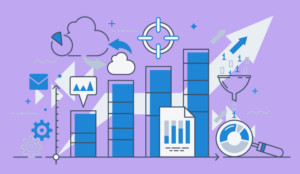Steven Harris of Odigo argues that AI-powered data analytics is the present and future of customer experience.
Organisations across all sectors are investing vast amounts of money and resources into developing technology to gather and store data, and strategies to optimise it.
Clearly, an awareness of the value in leveraging data to deliver enhanced customer experience (CX) is at the top of many companies’ to-do lists.
The benefits from proper data usage touch every aspect of an organisation and the possibilities that derive from a data-driven approach are significant.
As Forrester argues in The Data Management Playbook for 2020, “[y]our business is only as fast as your data. What you know – and how well you use that knowledge – fuels your competitiveness and growth.”
Artificial Intelligence (AI) Is Data
All AI-based solutions, whether conversational agents (chatbots or voicebots) or other cutting-edge programs, need data.
Why? Because training advanced software means feeding it with data; this in turn develops a familiarisation with language and processes, and leads to comprehension and autonomy.
The more data entered into an AI-powered program, the more capabilities it has. Once effectively taught, it can then be deployed in data collection and storage, either through direct interaction with customers or as part of augmented support for a live agent.
AI empowers the capacity for data analytics, as data analytics increases the capabilities of AI. The success of one is based on the success of the other, and their functions, if not interchangeable, are inherently connected.
AI’s growing capabilities for handling customer service are only made possible through data.
Gartner predicts: “By 2022, 70% of customer interaction will involve emerging technologies, such as machine learning (ML) applications, chatbots and mobile messaging, up from 15% in 2018.”
Making Full Use of AI and Data Analytics Requires a Culture Shift
The biggest change that forward-thinking organisations need to implement is not technological, but operational, in that data, working for and with AI, must be placed at the centre of the business model.
Investing in technology is important, but establishing a data factory staffed with qualified data engineers and analysts capable of driving the collection and use of data within the company is vital.
Eliminating silos within an organisation means educating staff on the necessity of sharing data through an open culture – and encouraging the business and data sides of operations to coordinate efforts, align visions and achieve goals.
Firms that synchronise business operations and CX, while adopting a data-driven approach, will enjoy greater benefits, according to a Capgemini study.
Leverage AI and Data Analytics for Growth
Fully integrating AI and data analytics into an organisation’s ethos and operations has a transformative impact, in particular with regard to customer relations.
Beyond increased efficiency, through automation and augmenting agents with tools that ensure better performance, AI and data analytics meet the expectations of the most important feature customers want: personalisation.
Understanding customers’ needs, wants and perspectives is the only way to deliver rewarding service.
Modern consumers desire meaningful relationships with brands and, used to the ease of communication in their personal lives, they demand the same effortless connection with companies.
Conversations with friends may start on a social platform, move to a text and end on a phone call. Throughout the various channels, the conversations continue seamlessly.
Consumers expect brands to provide the same smooth journey, which can only be accomplished through sharing and utilising data.
Author: Guest Author
Published On: 24th Jul 2020 - Last modified: 28th Jul 2020
Read more about - Guest Blogs, Odigo















